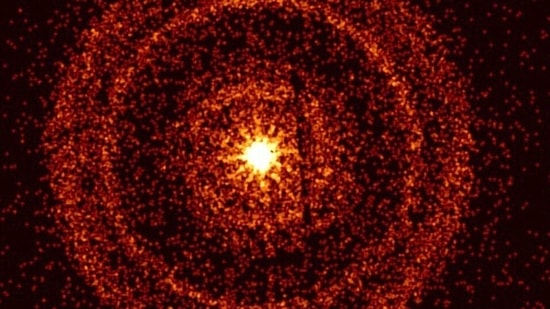What gives black holes away? NASA's answer, and an equivalent of Black Friday
Black holes are invisible to telescopes because they don't emit or reflect light.
For shopaholics worldwide, it is that time of the year when they look forward to replenishing their wardrobes and closets with the Black Friday sales going live. Despite massive inflation, the biggest shopping event of the year is said to have been kicked off on a positive note. But NASA marked the day for science-lovers with a treasure trove of trivia and visuals.

Calling it the the “Black Hole Friday”, the United States’ space agency posted stunning images on Twitter and shared some details about the ever-intriguing world of space. NASA defines a black hole - for the uninitiated - as "a great amount of matter packed into a very small area - think of a star ten times more massive than the Sun squeezed into a sphere approximately the diameter of New York City. The result is a gravitational field so strong that nothing, not even light, can escape."
In its tweet, marking the equivalent of Black Friday, the space agency wrote: “You’ve heard of the big #BlackFriday sales, but we’re taking today to celebrate a doorbuster of cosmic proportion: #BlackHoleFriday. (sic)”
And then it introduced the curious minds to ‘blazars’ - “supermassive black holes feeding off material, which can create two powerful jets of high-speed particles.”
Black holes don’t emit light- this is known. But what then gives them away? “Swirling gas, energetic jets, and even ripples in space-time give them away,” tweets NASA.
As per the space agency, the nearest known black hole, called 1A 06200-00, is 3,000 light-years away. While, the most distant black hole detected, at the center of a galaxy called QSO J0313-1806, is around 13 billion light-years away.
“Bursts of gamma-rays announce the birth of some black holes. Our Fermi and Swift observatories keep a continuous eye out for such bursts, which signal either the collapse of a large star or the merger of two neutron stars,” NASA gave details on its Twitter thread on blackholes.




